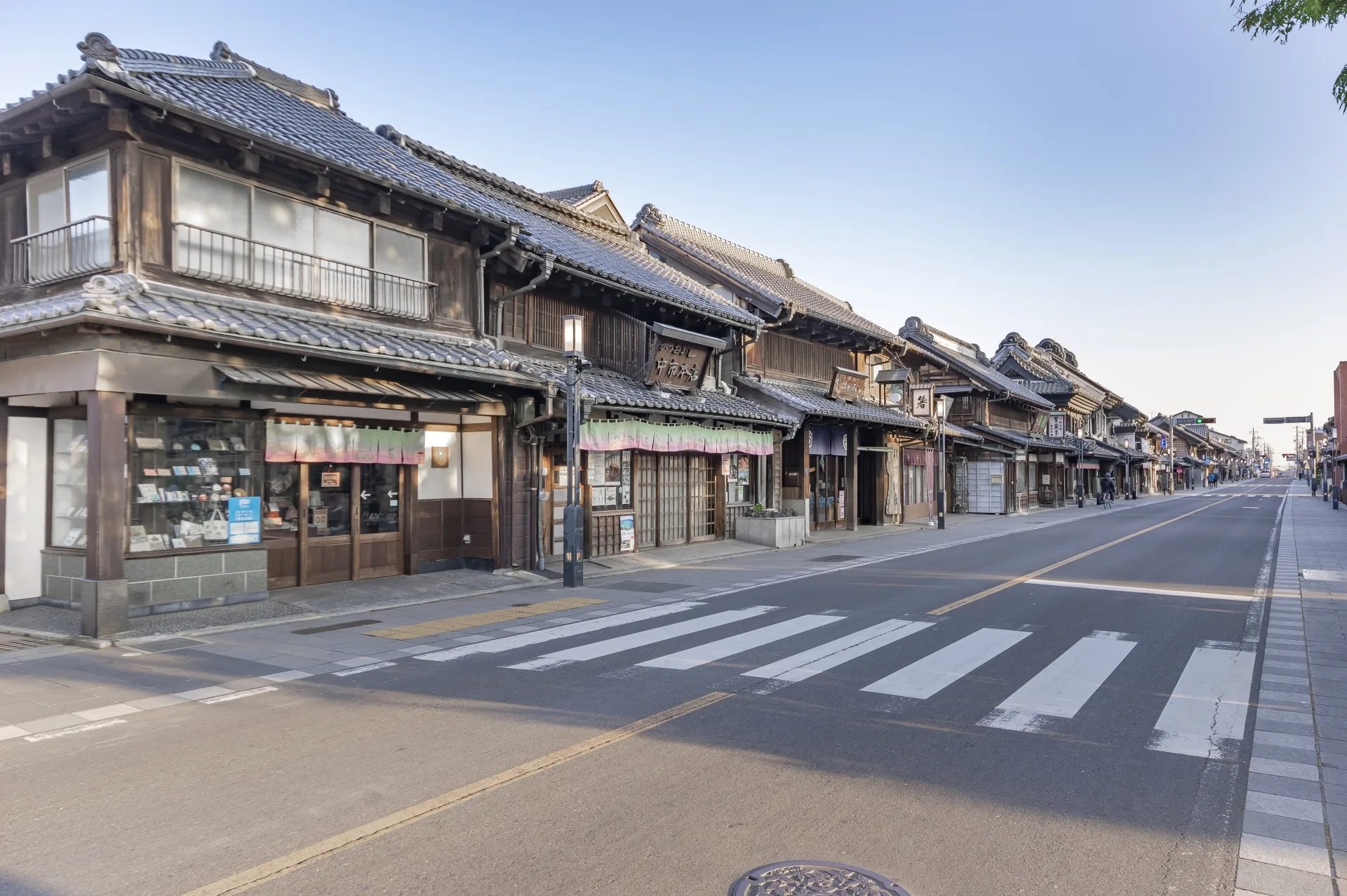Table of Contents
- 1 Introduction
- 2 Location of Kawagoe
- 3 Listen to the sound of Toki no Kane (Bell of time)
- 4 Eat traditional confectionery at Kashiya Yokocho
- 5 Pray at Kawagoe Hikawa Shrine
- 6 Back to Japan 100 years ago at Taisho Roman Dream Street
- 7 Feel the history at Kawagoe Castle
- 8 Pray to God at Kawagoe Kumano Shrine
- 9 Conclusion
Introduction
Hello, everyone!!
Today, I’m gonna introduce Kawagoe, known as “Little Edo”.
This is because the buildings from the Edo period (1603-1868) have been preserved in good condition.
In these days, the number of foreign tourists who visit Kawagoe has been rapidly increasing by about 6.2 times as compared to the previous year.
That’s why, in this post, I will introduce 6 things to do in Kawagoe for you!!
You will surely be captivated by the charm of this town.
Location of Kawagoe
Let’s check the location of Kawagoe before I will introduce things to do in Kawagoe.
It takes about 1 hour to take a train from Tokyo Station to Kawagoe.
Here is an example of how to get there from Tokyo Station.
- Tokyo Station ⇒ Ikebukuro (16 minutes, 208yen)
: Tokyo Metro Marunouchi Line bound for Ikebukuro - Ikebukuro ⇒ Kawagoe (32 minnutes, 481yen)
: Tobu Tojo Line Express bound for Morinokoen (Saitama Pref.)
Google map
Listen to the sound of Toki no Kane (Bell of time)
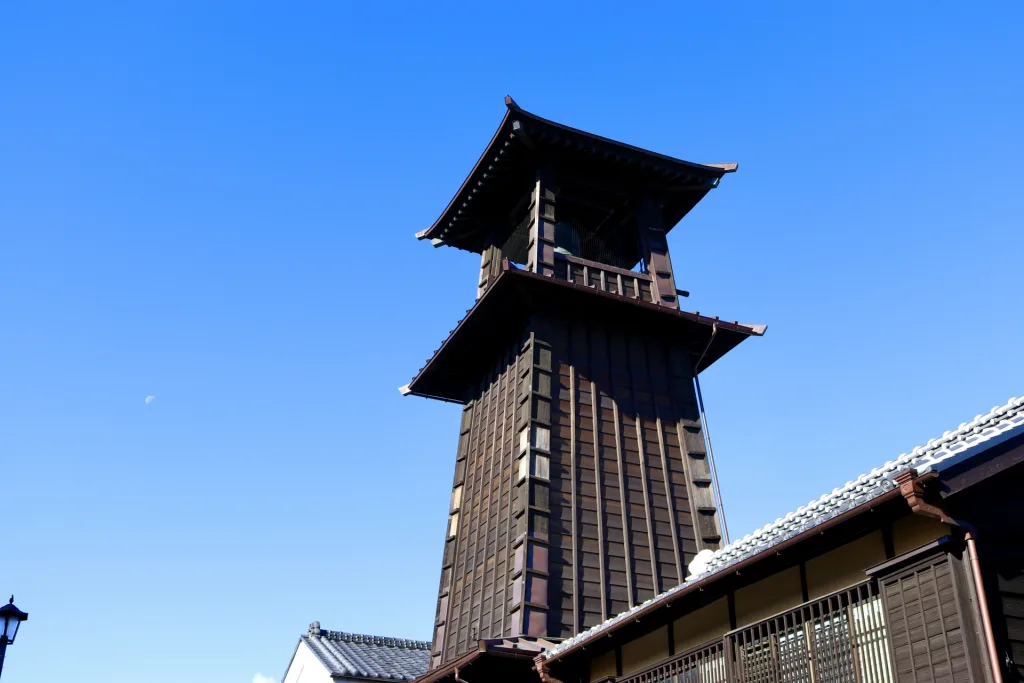
Toki no Kane, which translates to “Bell of Time,” is a prominent landmark located in Kawagoe.
The bell tower is a three-story wooden structure with a black exterior and a distinctive hipped roof.
It is a fine example of traditional Japanese architecture from the Edo period.
You can visit here for free!
The bell of time is rung four times a day by an automatic bell striker. (6:00, 12:00, 15:00, 18:00)
I encourage you to visit the Bell of Time for this time!
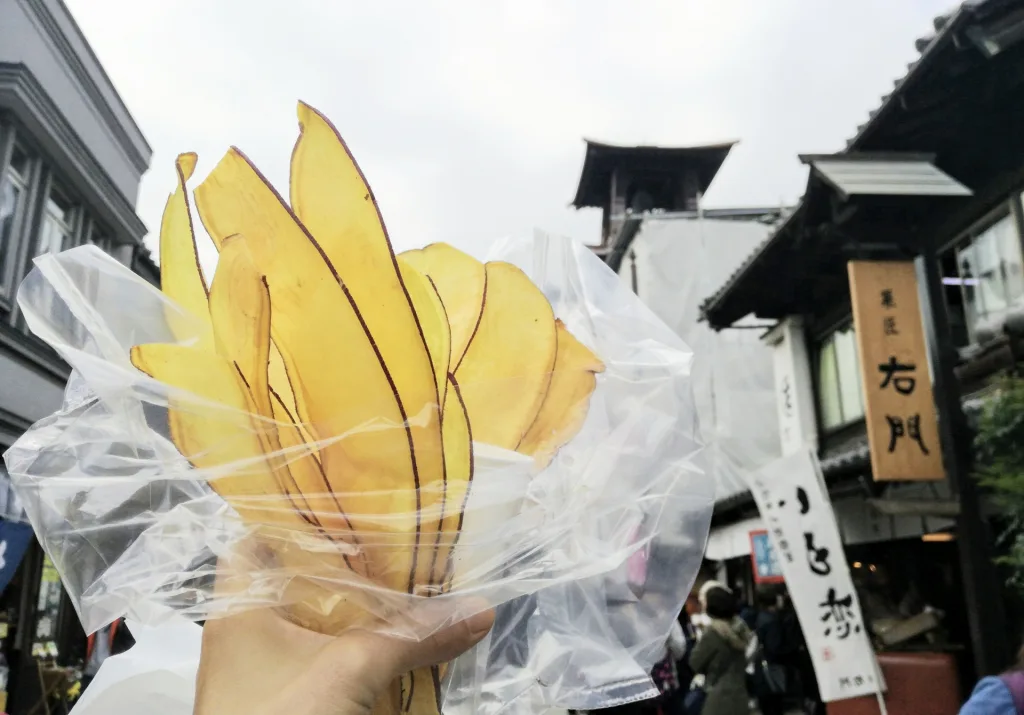
Eat traditional confectionery at Kashiya Yokocho
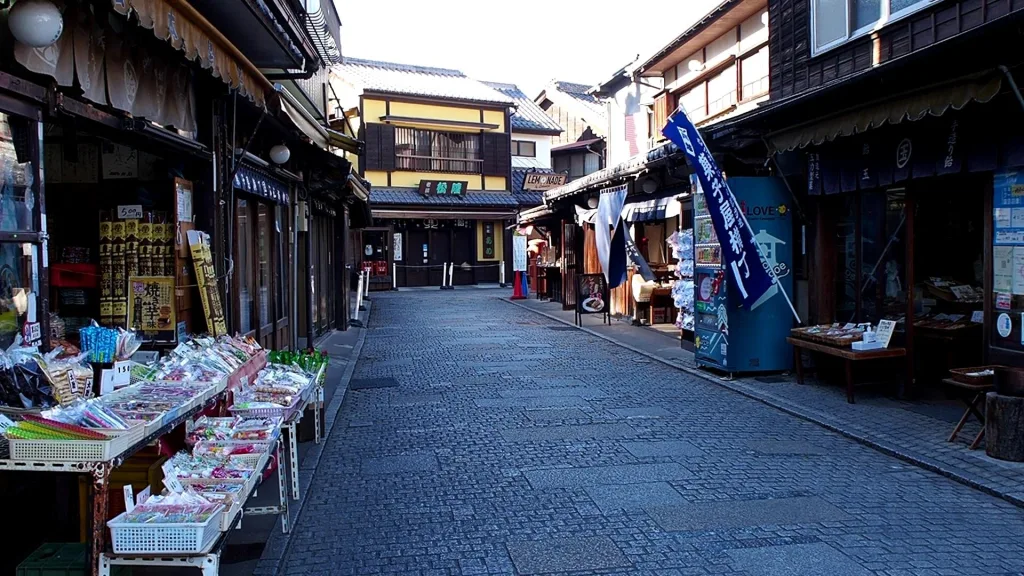
Kashiya Yokocho translates to “Japanese traditional sweets shops Lane,” and it lives up to its name with many traditional Japanese sweets shops.
These shops sell a variety of traditional sweets, candies, and snacks that were popular during the Edo period.
The simple and nostalgic aroma of Kashiya Yokocho was selected as one of the “100 Sceneries of Fragrance” by the Ministry of the Environment in 2001.
Visitors can find an array of colorful and unique treats, providing a delightful taste of Japan’s historical confectionery.
Pray at Kawagoe Hikawa Shrine
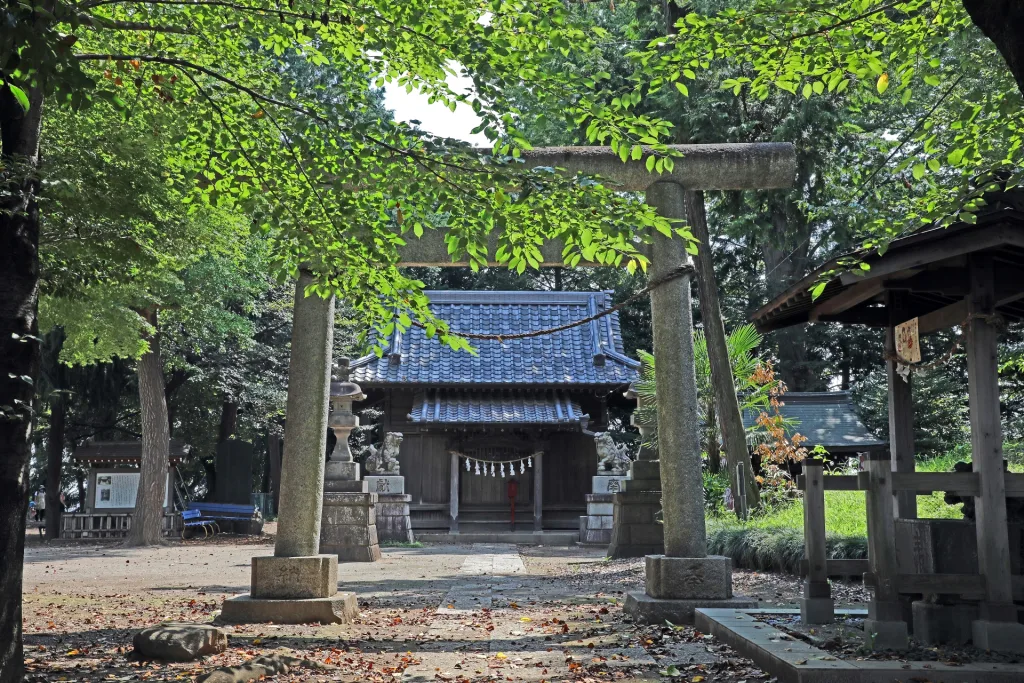
Kawagoe Hikawa Shrine is a popular and historic religious site, attracting both locals and tourists for its cultural significance and picturesque surroundings.
The origins of Kawagoe Hikawa Shrine date back over a thousand years to the Heian period (794-1185).
The shrine is believed to have been established in 703.
Kawagoe Hikawa Shrine is often associated with harmony in relationships.
As a result, the shrine is a popular destination for those seeking blessings for marriage, family harmony, and general well-being.
In addition, more than 2,000 wind bells are displayed in the summer.
If you have never heard the sound of wind bell, you should definitely visit here!
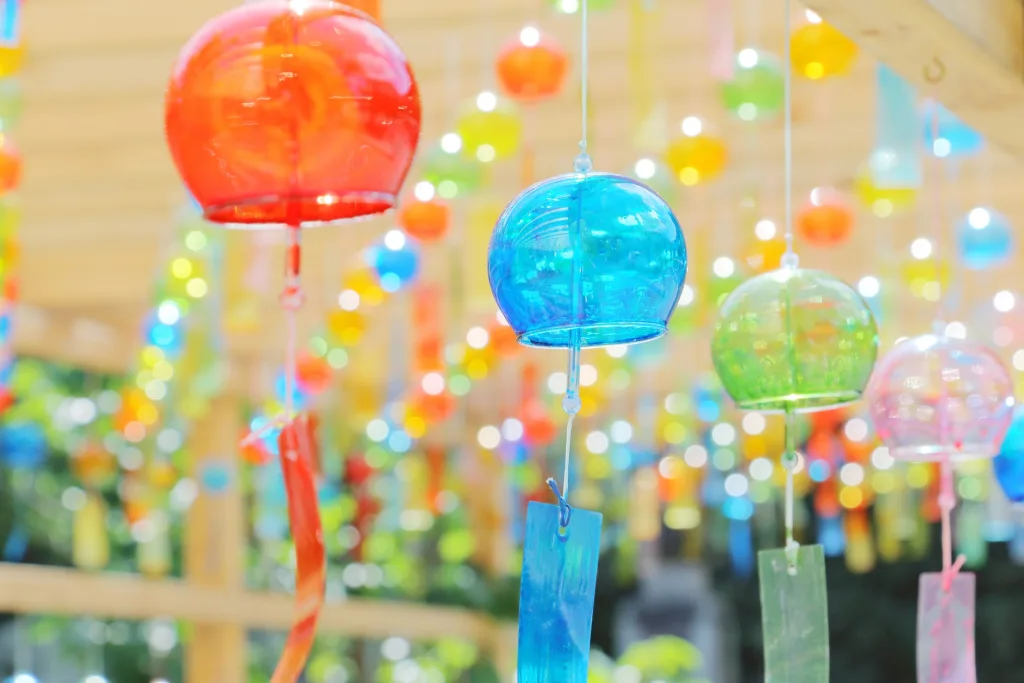
Back to Japan 100 years ago at Taisho Roman Dream Street
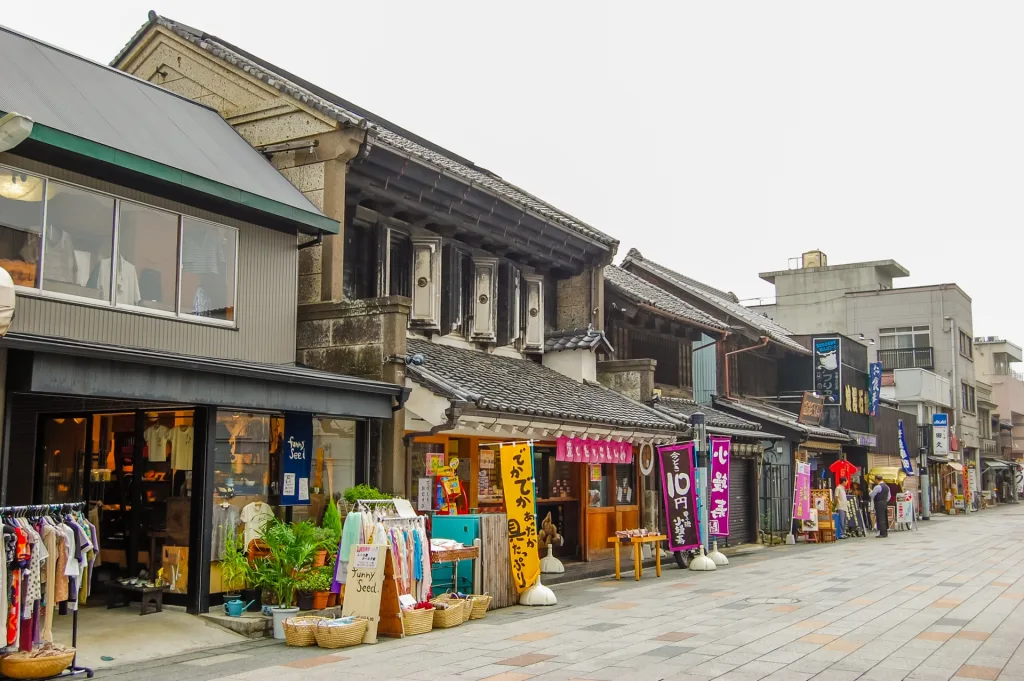
Taisho Roman Dream Street specifically captures the ambiance of the Taisho era (1912-1926), characterized by a mix of Western and Japanese influences.
The buildings along Taisho Roman Dream Street reflect the architectural style of the Taisho era (1912-1926), featuring a blend of Japanese and Western design elements.
If you visit here, you will be able to feel like you are in Japan 100 years ago.
Every year, from the end of March to May, Koinobori (carp streamers) are flown in the sky along this street.
The tradition of flying Koinobori is meant to wish for the health and success of children, drawing inspiration from the strength and determination of carp swimming upstream.
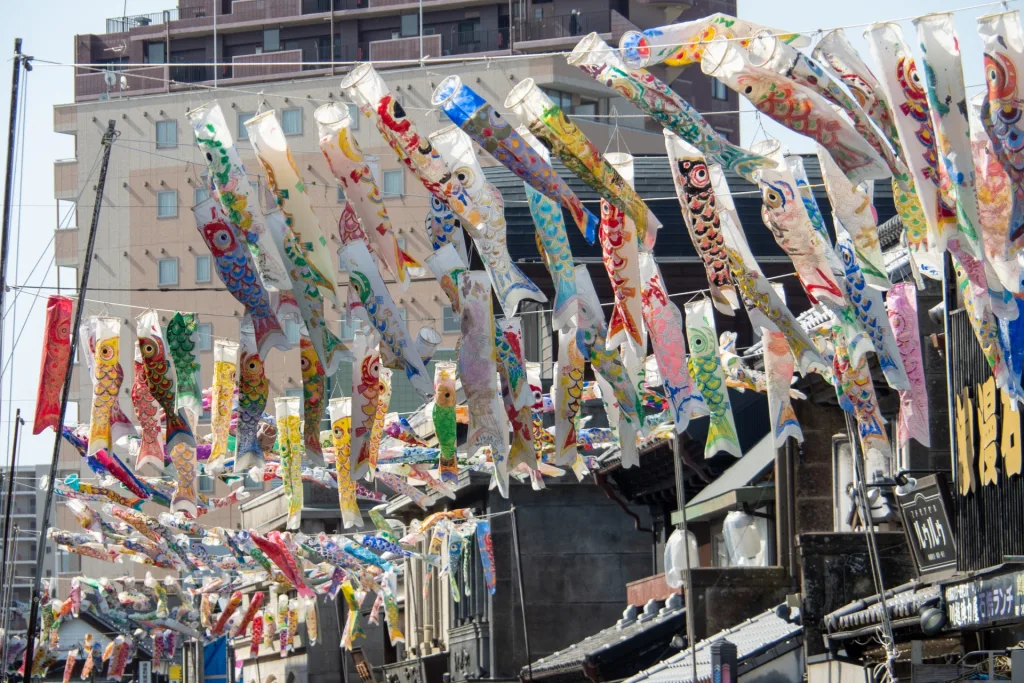
Feel the history at Kawagoe Castle
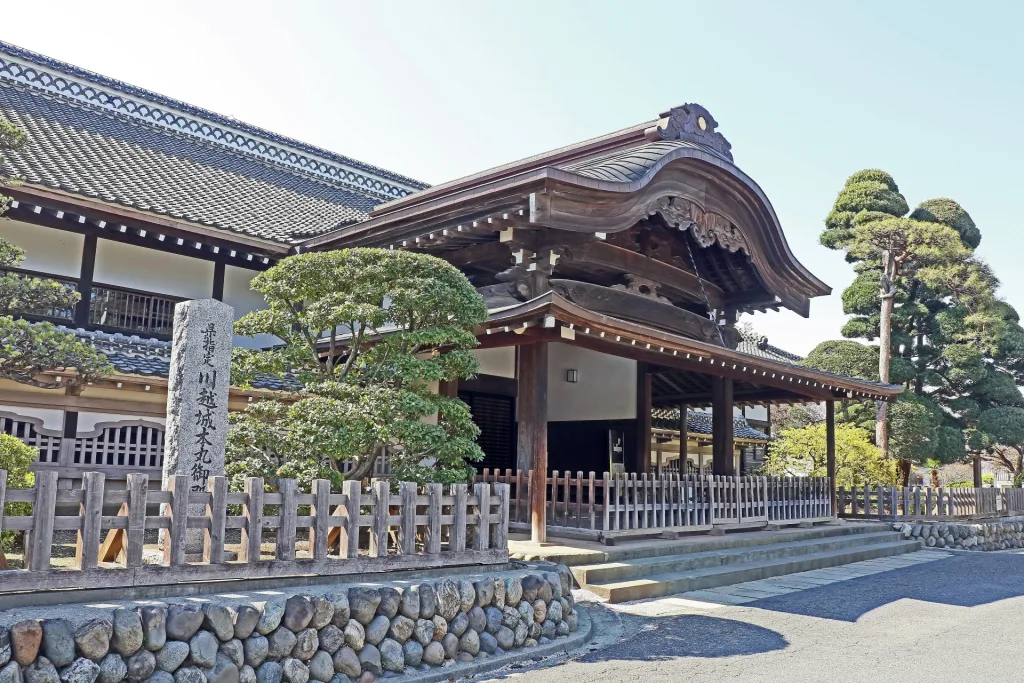
Kawagoe castle played a significant role during the Sengoku period (1467-1603) and the early part of the Edo period (1603-1868).
Part of the Honmaru Goten in this castle, built in 1848, still exists.
Honmaru Goten is the building or area within the main enclosure of the castle where the lord of the castle resided, conducted political affairs, and where the samurai gathered.
Please feel the history of Samurai here!
Pray to God at Kawagoe Kumano Shrine
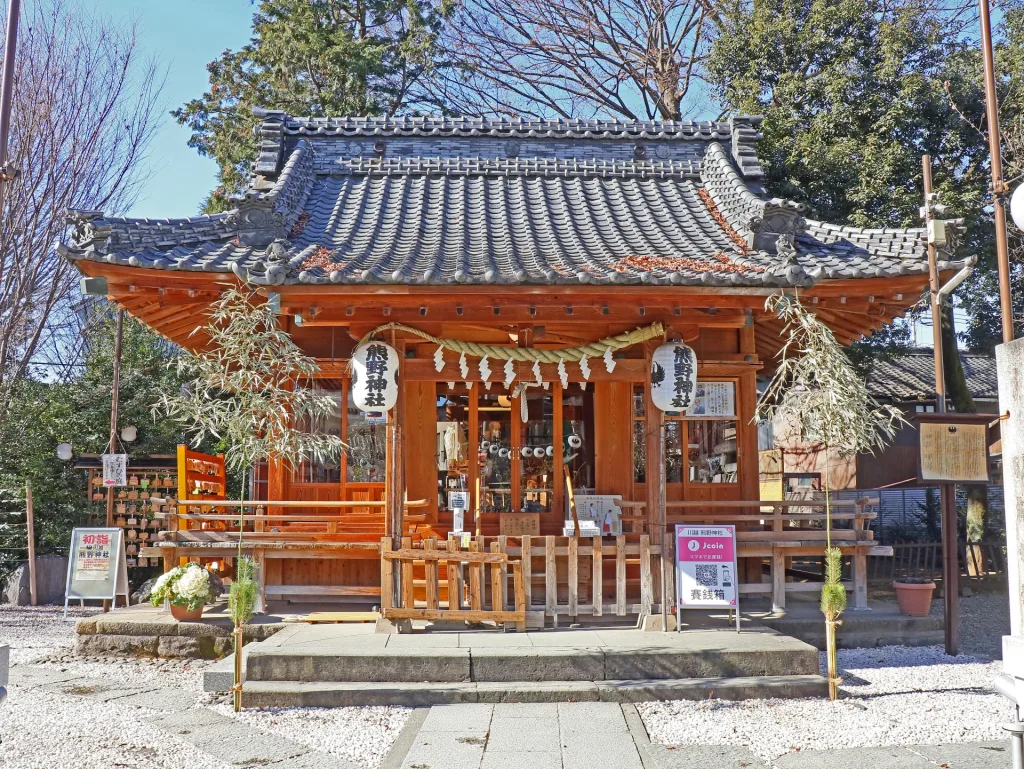
Kawagoe Kumano Shrine, popularly called “Okuman-sama,” is believed to be the god of luck and matchmaking.
On the side of the approach to Kawagoe Kumano Shrine, a “footstep health road” is provided where visitors can walk while pressing their foot pressure points with stone prongs.
Why don’t you try this intense load for your health?
Conclusion
Thus, Kawagoe is a very attractive place where you can feel the history of Japan.
Why not include Kawagoe when planning your trip to Tokyo?
Safe travel!!
